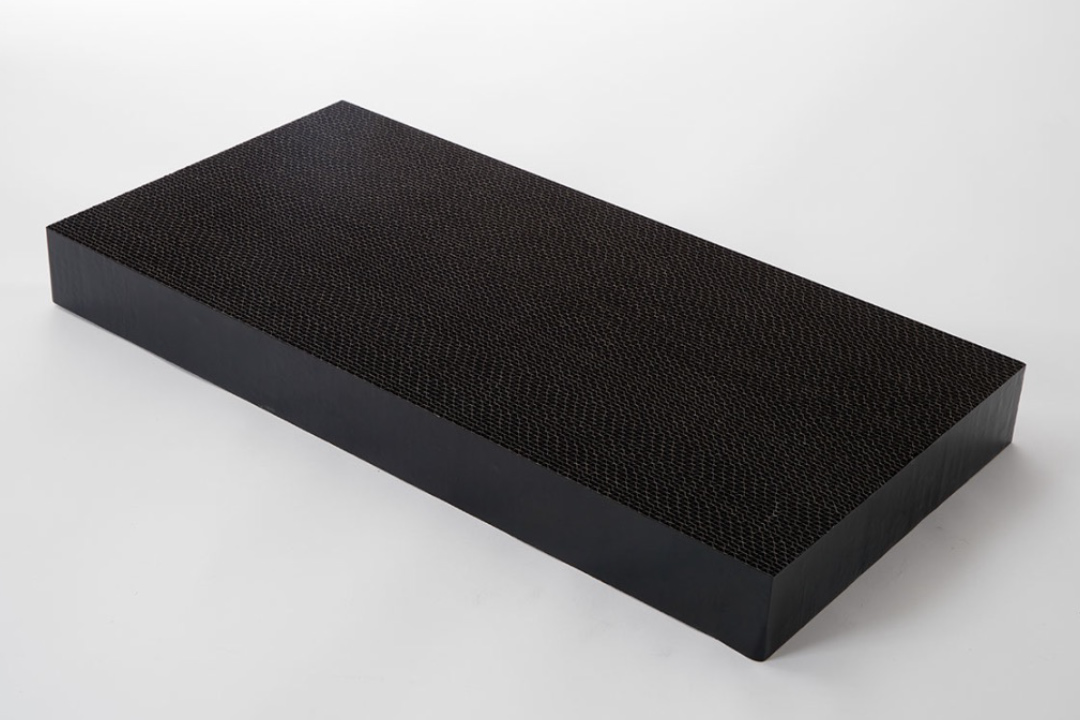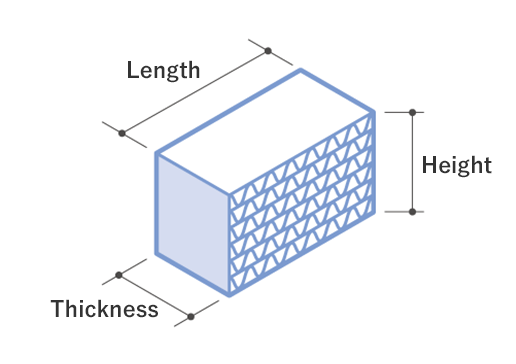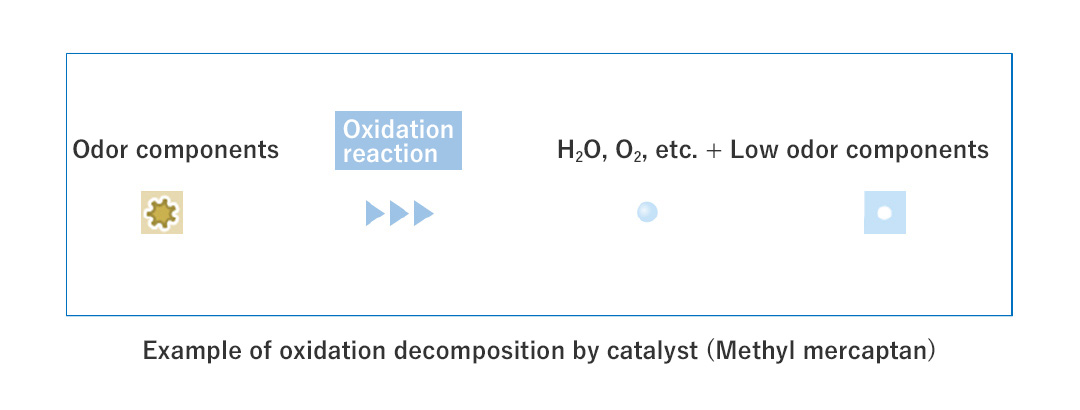Deodorizing Filter

Deodorize various air
Depending on the type of odor, we can customize the catalyst or adsorbent.
Product Specifications
We support deodorant catalysts and adsorbents on our catalyst carrier HONEY-SAVE. Please specify the cell count and filter size.
Depending on the type of odor, we can customize the catalyst or adsorbent.
| Main applications | For deodorizing shoe boxes, toilets, etc. | For deodorizing household appliances, kitchens, etc. |
|---|---|---|
| Supported odors | Ozone smell, ammonia, methyl mercaptan, etc. | Ammonia, propionaldehyde, etc. |
| Targeted Products | SCC-413 | Deodorizing HONEY-SAVE |
| Cell count | 200 , 300 , 400 , and 500 | 50 , 60 , 80 , 120 , and 200 cells |
| Maximum filter size* | Length 150 mm × Height 150 mm × Thickness 25 mm | Length 610 mm × Height 610 mm × Thickness 200 mm* |
| Heat resistance | 200 °C | 400 °C |

*Filter size
Filter sizes are customizable.
For more details, please contact us.
Deodorization Principle

Example of kitchen exhaust
Physical adsorption or catalytic oxidation and decomposition reactions reduce the intensity of odors, transforming them into less odorous substances.
Differences in Deodorization Mechanism
1. Physical adsorption
Weak forces (Van der Waals forces) between molecules and capillary action allow porous materials (like activated carbon) to capture odorous substances.
2. Catalytic oxidation and decomposition
Odorous substances undergo catalytic oxidation and decomposition reactions, reducing their intensity.
Example: Methyl mercaptan
4CH3SH + O2 → 2H2O + 2(CH3 – S – S – CH3)




